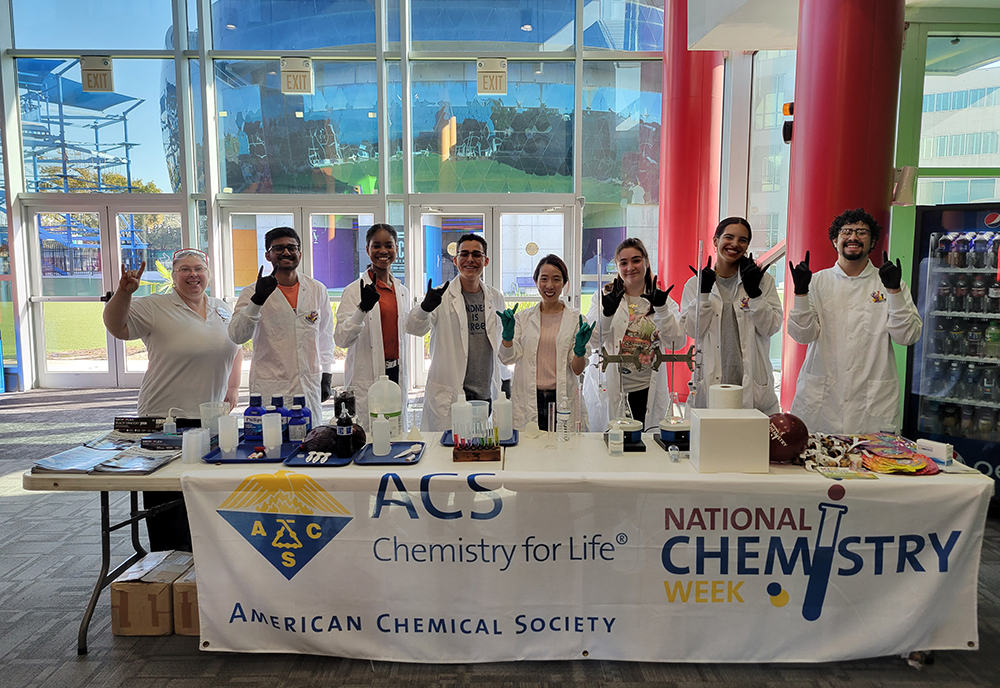The USF Department of Chemistry and the Tampa Bay American Chemical Society (ACS) held a free science experiment at the Museum of Science and Industry (MOSI) to celebrate National Chemistry Week. Six USF chemistry undergraduate students volunteered their time to mentor participants and demonstrate a captivating chemical reaction.
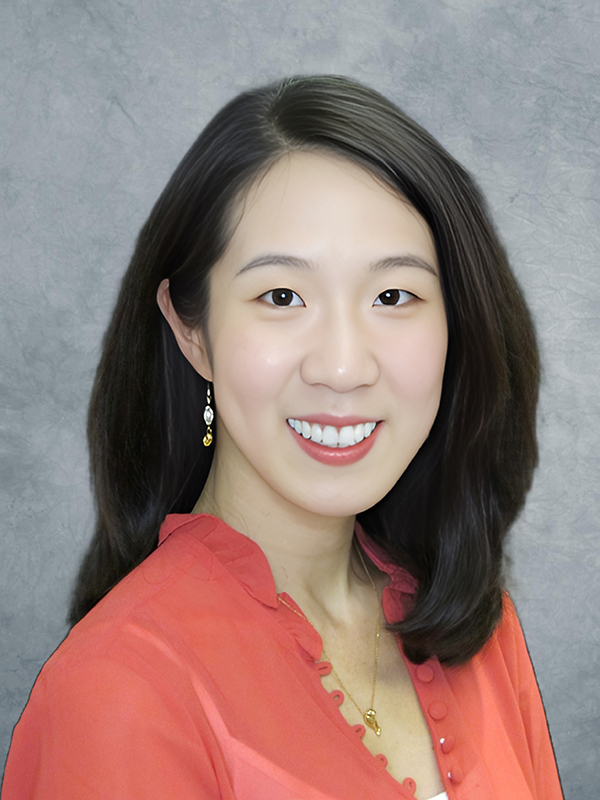
Dr. Christie Tang. (Photo courtesy of Dr. Christie Tang)
Dr. Christie Tang, an associate professor of instruction and coordinator of upper-lab level divisions, spearheaded the experiment. Beyond her role as professor, she is also a member of the local section of the ACS, who helped support this initiative.
Each year during National Chemistry Week, Tang and fellow chemistry faculty member Dr. Kimberly Fields, collaborate with the ACS to organize an experiment at MOSI. This year, they decided to incorporate a refreshing change by involving USF student volunteers.
The volunteers for the experiment were selected from the Peer Leading course group. This course is offered to upper-level undergraduate students who provide mentorship to younger students in the department. Despite receiving over 200 applications each semester, only 24 students are chosen for the course. The criteria includes completing chemistry 1 and 2 with good grades and demonstrating strong analytical thinking skills. Unlike traditional tutors, these students serve as guides to help their fellow undergraduates navigate their coursework.
The theme for this year’s National Chemistry Week centered around the healing power of chemistry. This inspired Tang and the students to create an experiment showcasing how chemistry alleviates a common stomachache. Their experiment utilized household ingredients such as milk of magnesia, purple cabbage juice, and vinegar.
“An example of acid-based chemistry in our everyday life is a stomachache,” Tang said. “When this happens the common remedy is to take an antiacid, which helps neutralize the acids in our stomachs. To demonstrate this reaction, we did so by creating a color change. We used vinegar to present the stomach acid, and milk of magnesia to present the base while using the purple cabbage juice extract as a pH indicator. The cabbage juice acted as the pigment for the cloudy consistency of milk of magnesia, and when combined, created a beautiful blueish-green color. The idea was for the kids to add vinegar to the mixture in one tablespoon increments and note the reaction of the mixture each time. The more vinegar added to the mixture the more the pH level changed creating an instant transformation of colors, demonstrating the idea of acid-base neutralization reaction.”
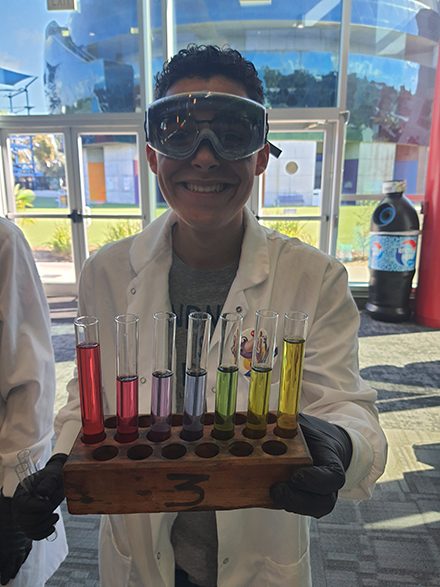
Student, Elliot Santaella Aguilar, holding the pH color indicator. (Photo courtesy of Elliot Santaella Aguilar)
Nour El Hoda Malone, a student volunteer majoring in biomedical sciences, said that both parents and children were amazing by the bright reactions of the demonstration.
“Both the parents and children found it very interesting that red cabbage leaves were a natural indicator and could be used to help determine pH in a solution,” Malone said. “This experiment utilized milk of magnesia as the base, which many kids pointed out was a medicine they took whenever they had a stomachache. When explaining what we were doing is the same thing happening in their stomach, they were amazed. Allowing the children to take charge, while guiding them, and making them feel like they were conducting their own experiment like a real chemist was appreciated by the parents.”
In addition to her membership in the ACS, Tang also serves on the youth chemist committee for the organization. Beyond organizing the annual experiment at MOSI, she takes charge of outreach initiatives in various middle and high schools, establish connections with chemists across universities, and host the annual ACS Tampa Bay Fall banquet.
Tang hopes that through these endeavors she will be able to challenge the misconception that chemistry can only be learned in lecture halls and allow students to have a place where they can express their interest in the subject.
“I think the best way to learn, especially in STEM education, is not to force them to learn something they are not interested in. Instead, we want them to establish a sense of curiosity, something they want to do themselves because it's fun. We also want the parents to see how their kids get excited for a subject that normally is known as a hard science. If they are excited and curious, we can start to see chemistry being transformed from a lecture to something that occurs in our everyday lives,” Tang said.
Elliot Santaella Aguilar, a volunteer at the event and double major in biomedical sciences and psychology, recounted his most memorable moment of the experience.
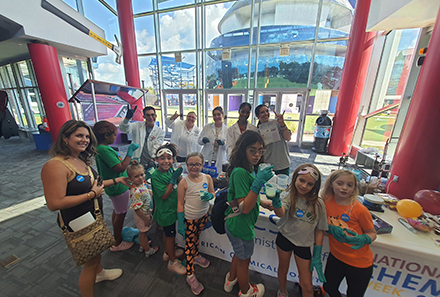 Parents and children participating in the free experiment at MOSI. (Photo courtesy
of Dr. Christie Tang)
Parents and children participating in the free experiment at MOSI. (Photo courtesy
of Dr. Christie Tang)
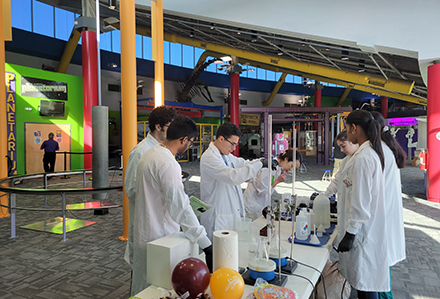 USF student volunteers setting up the experiment at MOSI. (Photo courtesy of Dr. Christie
Tang)
USF student volunteers setting up the experiment at MOSI. (Photo courtesy of Dr. Christie
Tang)
“One of my most memorable moments was being able to see the smiles on kids' faces when they were able to figure out how much more vinegar they needed to add to get the solution to the final color we were aiming for. They were also very grateful to learn how milk of magnesia works to help our upset stomachs when they’ve become too acidic. The parents also shared their appreciation for making the experience enjoyable, because growing up they felt like they were never shown how fun practicing science can be,” Aguilar said.
Tang plans on continuing the annual experiment at MOSI and hopes to involve more peer leaders in the future.
To learn more about the Peer Leading course and other opportunities, visit the Department of Chemistry homepage.
